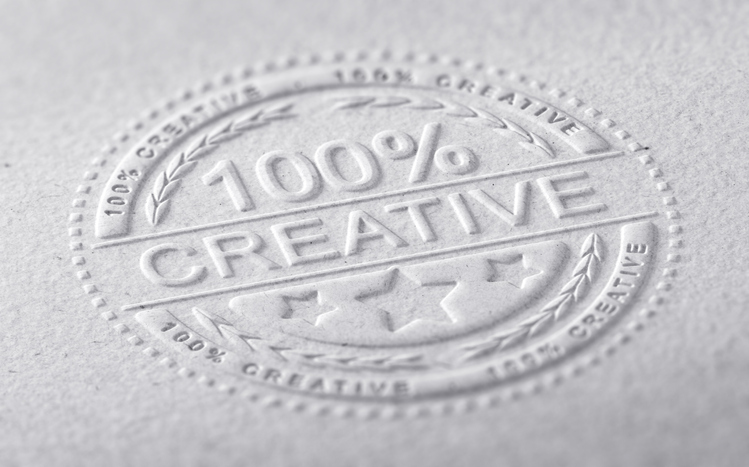Glamorize Your Products with Illustrative Package Designs
March 23, 20214 Intelligent Ways to Combine Print and Digital Marketing
March 30, 2021Stand Tall with 6 Sharp Embossing Techniques
Have you ever run your hand over an antique, textured wallpaper?
With its authentic sense of depth and detail, you almost can’t help but touch it. The raised relief is as appealing to your imagination as it is to your fingertips.
Embossing has a similar effect. Embossing and debossing are two print techniques used to add texture to a design. An embossed pattern is raised against the background, while a debossed pattern is sunken into the material’s surface (but might protrude somewhat on the reverse side). These popular finishing techniques – used for business cards, menus, invitations, foil stickers, notepads, and more – are ideal for bringing a fresh, contemporary look.
Take Center Stage
Embossing elevates your design from the background and can be used to create geometric patterns, add borders, or produce a custom seal for product packaging.
The texture and sculptural quality that embossing creates makes for a memorable user experience. Add elegance and stateliness to your next project with one of these beautiful techniques:
1. Blind Embossing
Blind embossing uses custom-made dies to create a raised surface according to the design.
Blind embossing refers to a stamped design without metallic leaf or ink (like plain textured letters with a page), giving a base-relief effect. One way to make blind embossing stand out even more is to use textured paper. Since the area around the embossing will be pressed smooth, this creates more of a contrast.
2. Combination Embossing
As its name suggests, this type of die combines multiple effects (like embossing and foil stamping) into one process.
The combination die has a cutting edge around the perimeter to cleanly break the excess foil away from the embossed area. Given the unbeatable finish and fine detail of this element, it is a natural choice when printing elegant crests, fancy logos, or intricate type for business cards, letterheads,
3. Single-Level Embossing
This process uses a die that changes the surface of the paper at only one level.
Since the die needed for this kind of embossing is simple, it is the most affordable embossing option.
4. Multi-Level Embossing
This process uses a die with several distinct levels to create a sculptured impression or a more detailed texture.
Multi-level embossing kicks things up a notch by changing the surface of the paper at several planes. This makes the technique popular for multi-dimensional shapes, landscapes, or images with unique details (such as leaves or feathers).
5. Sculptured Die
This kind of die requires custom hand tooling to create levels and details for an emboss that resembles a bas-relief sculpture, a figure that is raised a few inches from a flat background to give a three-dimensional effect.
Like a piece of metal leaping off the paper, the effect is striking and lifelike. While sculptured embossing is more expensive, it is absolutely gorgeous for creating custom pictures, shapes, 3D logos, faces, animals, or landscapes.
Because this die requires someone to create it by hand – usually based on an image provided – this method is more expensive.
6. Bevel-Edge Dies
Want to add sophistication to your project?
Beveled dies bring a softened, refined look to your shapes and letters, adding a curve or edge to each character (typically at 30 to 60 degrees). The broader the angle, the greater the illusion of depth.
Create a Timeless Treasure
New trends take shape every day, and you can make a bold statement with existing techniques that give your print materials a sleek twist.
While embossing was originally found mostly in personalized stationery, today, raised elements can be used in envelope flaps, business cards, packaging, hang tags, and more. Great designs mix the old and the new to create timeless print pieces your clients will love!

